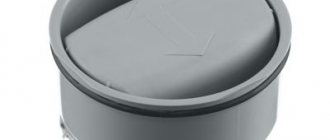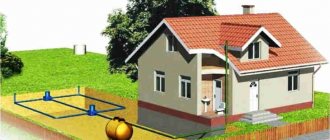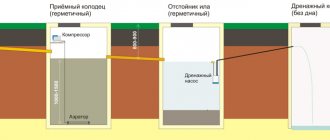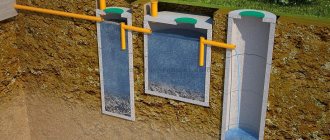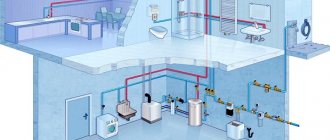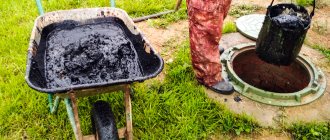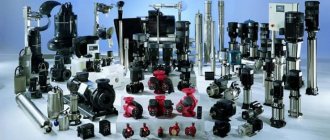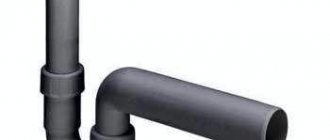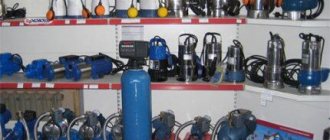The ventilation outlet of the sewer system is designed to allow air to enter the vacuum zone that forms each time water is drained, eliminating unpleasant odors and noise. An air valve for sewerage can replace a classic device, a drain pipe, and does not have the typical inconveniences associated with the operation of the latter, including icing and narrowing of the outlet going to the open air during the cold season, as well as the likelihood of unpleasant odors getting into the open house windows.
Design and principle of operation of the air valve
An air sewer valve is a body whose diameter corresponds to a similar pipe parameter (hence, the flow parameters in it are identical), equipped with a rod or membrane that closes the outward-facing inlet.
At rest, the pressure existing in the pipeline keeps the rod or membrane in the closed position, “pressing” them from the inside. While the flow rate increases when water is drained, a vacuum is formed in the pipeline, the valve or membrane opens, letting in the amount of air necessary to equalize the pressure. When the parameter is normalized, the closing device returns to its original position.
Important feature: The return flow of air with an unpleasant odor from the sewer system into the living space is eliminated due to the pressure difference during the period when the hole is open. Air cannot move from a low pressure zone to a high pressure zone.
Operating principle of a vacuum sewer valve
There are also combined models that work both for air intake and air outlet.
The installation location of such devices needs to be carefully considered; it is not always advisable to place them in a bathroom or toilet; it is possible to move them outside of residential premises or install them in a special unit.
Signs of problems with the sewer system
Irregularities in the sewer system can be identified by characteristic signs.
These are:
- presence of extraneous sounds;
- spread of unpleasant odors.
In houses with a long-established sewer network, it is necessary to first check all elements of the network for damage. Deviations in the operation of the new system may indicate that it was installed incorrectly.
If during the inspection it was possible to exclude such causes of possible damage as cracks in pipelines, blockages in drain pipes or ventilation ducts, or improper slope of pipes, then the cause of the problems is most likely insufficient air flow. In this case, installing a vacuum valve will help troubleshoot the system.
There can be several reasons for improper operation of the sewer system: blockage in the pipes, violations of installation rules, blocking of the ventilation (fan riser) by residents on the upper floors. Sometimes the source of trouble can only be identified by a specialist
Types of air valves
It was already mentioned above that the design of non-return air valves for sewerage can have a membrane or a rod. Such models work almost equally efficiently, however, plastic membranes are more susceptible to wear and need to be changed periodically.
- Some types of devices can only be installed on one drainage point (sink, toilet, etc.). These automatic devices have a low throughput.
- The 110 mm sewer air valve can be mounted on a common riser, thus providing ventilation for several sewer pipes at the same time.
- Combined models are universal and have the advantages of products of both the first and second categories.
The photo shows an aerator for sewerage.
It is obvious that local (designed for one pipe) models have a smaller diameter than those capable of providing ventilation for the entire system. In most cases, DN 50 mm models are used for these purposes.
According to the installation method, the valve (sewer aerator) can be:
- threaded,
- flanged,
- coupling
Step-by-step installation instructions
Most air valves are produced by manufacturers to connect to DN110 pipes. If the connecting size of the device does not correspond to the size of the pipe, a special adapter is used. For pipes DN50 or DN75, aerators with the corresponding diameter of the connecting outlet or equipped with a reducing insert are used.
It must be remembered that a valve designed for pipes with a diameter less than 110 mm can be installed for a maximum of two plumbing points.
In areas of transition from a pipe of a larger diameter to a valve with a smaller diameter, reducer inserts and various adapters are used. To install the aerator on a cast iron pipe, there are also special adapters that ensure a reliable joint between the plastic and the metal.
At the beginning of the work, the installation location of the valve is determined, taking into account the installation rules and its accessibility for further maintenance.
Next, perform the following steps:
- The water supply in the house is turned off.
- If the installation is carried out on a previously installed pipeline, then a tie-in is made and a special adapter is installed.
Most aerator models have a bell-type connection.
The assembly of such connections is carried out in the following sequence:
- The outer surface of the smooth part and the surface inside the socket are cleaned of dust.
- Wipe the sealing ring from possible contamination and place it in the socket groove.
- The surfaces that come into contact during connection are lubricated to reduce friction. To do this, use a silicone-based sealant or soap solution, glycerin.
- Place the smooth end of the valve into the socket up to the mark. The quality of the connection is checked by rotating the parts relative to each other, followed by returning to their original position.
If necessary, the area with the connected vacuum valve is secured with a clamp. Upon completion of work, it is necessary to check the joints for leaks.
The surfaces that come into contact during connection are lubricated to reduce friction. To do this, use a silicone-based sealant or soap solution, glycerin
For hidden installation, special models of vacuum valves are used. If the riser is hidden in a fine or protective box, then measures must be taken to ensure the flow of air into the sewer valve. To do this, a ventilation hole is made according to the size of the aerator mesh.
The aerator body is buried in the wall, the fastening element is adjusted so that its outer edge is flush with the wall surface. The only visible element remains the decorative grille, which can be attached using self-tapping screws or inserted manually. For aesthetic reasons, it is available in the most popular color options - white, gray, black and chrome.
Some valve models can be used as drain cleaning holes. To do this, remove the decorative cover, take out the internal mechanism of the fan valve and insert the cable inside.
Equipment installation
An air valve for unvented sewer risers is not the only option for installing equipment. The valves can duplicate the classic ventilation scheme and be installed instead of or together with vent structures.
The main requirement when choosing an installation location is to maintain the ambient temperature above 0° C. This will avoid freezing and disruption of the equipment.
at which the air valve for sewage is installed is of great importance
- If there is no drain for draining water in the floor, the valve is placed 10 cm higher than the location of the highest outlet of the plumbing fixture or water-consuming equipment.
- If there is a ladder, the valve is placed 35 cm above the floor level.
Important: Maintaining such distances protects the fan valve from contamination.
It is necessary to select the installation location in such a way that it can be easily accessed for inspection and repair. If a vacuum valve for a sewer with a diameter of 110 mm is supposed to be covered with panels, plasterboard or other structures, it is necessary to provide such structures with special doors or hatches to avoid the need for complete dismantling during repair work.
Installation options for sewer aerators
The free end of the pipe or its socket is chosen as the installation location.
In some cases, it is advisable to install an air sewer valve in the attic or in a specially designated household room.
After selecting the installation location and purchasing a product that fully complies with the requirements and is suitable in terms of geometric parameters (diameter), the valve is installed in accordance with its design (on a thread, in a flange, using a coupling). It is important to ensure the tightness of the joints and check this parameter after completion of installation work.
There is no need to confuse the air and non-return valve for sewerage. We have a separate article about the latter on our portal.
If you are interested in finding out what a sewer pipe is used for in a private house, then we also talked about this in another article.
And you will find the features of independent construction of a peat toilet on the site here https://okanalizacii.ru/postrojki/tualet/torfyanoj-tualet-dlya-dachi-svoimi-rukami.html
Briefly about the operation of the sewer system
Before considering the design of the valve itself, it is necessary to understand how the sewer system itself should work correctly. We will briefly describe the principle of its operation.
All wastewater pipes (from the sink, bathtub, shower, toilet, washing machine and dishwasher) are connected to a sewer riser (the liquid enters by gravity). This is a vertically located pipe that runs through the entire house. At the bottom, the riser enters the central sewer, through which wastewater flows into a treatment plant or cesspool.
The upper part of the pipe - exits through the roof, ending above the roof level (or exits into the attic). It is not closed with plugs on top, but remains open. The purpose of this hole is to equalize the atmospheric pressure with the pressure inside the pipe. This design is called a fan pipe (you can read about it separately). It is relevant for any buildings with a height of 2 floors or more.
In some cases, installing a drain pipe is impossible or unnecessary. For example, if there are windows or balconies close to the outlet (at a distance of less than 4 meters), the smell of sewage will be heard in these rooms.
Why do you need an air valve for a sewer riser?
Now let’s figure out why we need an aerator in the sewer system.
The operation of the system described above may be disrupted for the following reasons:
- if an error was made during calculations or installation (rules and standards are standardized in accordance with SP 30.13330.2012, “Internal pipeline and sewerage”);
- if the riser itself is damaged;
- if the pipe at the top is clogged with foreign objects (leaves, construction debris, insects or even birds can get there);
- if the exit of the fan riser from above is frozen, and air passes through it poorly, or does not pass at all;
- if there is no drain pipe.
Ventilated and non-ventilated (with valve) riser
When water is drained, a vacuum is created inside the sewer: the liquid sucks in air. Moreover, its quantity can be quite large: for example, water from a washing machine (entered under pump pressure) requires 25 l/s of air per 1 l/s of liquid.
If there is not enough air, the flow going through the pipe sucks water from the “weakest” water seal (almost always this is a sink).
As a result, noise is heard in the room, and in addition, the smell easily penetrates inside (since the water from the water seal has gone into the pipe). This is not only unpleasant, but also harmful: sewer gas is toxic, and in high concentrations it is explosive (due to the methane it contains). Of course, an explosion due to methane entering the room is unlikely - too much gas must be present in the air.
If you ignore the unpleasant odor for a long time, in addition to the health hazard (due to the presence of hydrogen sulfide in the gas), the room itself may suffer. The fumes also contain bacteria that contribute to the appearance of mold in the bathroom. If there is also high humidity in the bathroom, this will very quickly lead to its development.
The solution to the problems described above is to install an air valve on the sewer pipe. This solution was invented in the Scandinavian countries: due to snowfalls and cold weather, the sewer risers leading to the roof froze.
Why is an air valve needed: it allows fresh air to enter the pipeline, quickly normalizing the pressure (equalizing internal and atmospheric pressure). It can be used either instead of a pipe going out onto the roof (that is, onto a non-ventilated riser), or together with it, in addition.
Features of operation
Rules regarding the selection and installation of air valves in the sewer systems of apartments and private houses were included in SNiP only about 10 years ago. The decision on the mandatory installation of such a device is made by a specialist, however, it is believed that the use of an aerator cannot reduce the efficiency and quality of the system. In general, this statement is true, but it is important to monitor the condition of the equipment and its serviceability.
Disturbances may include sticking of the membrane or rod in a certain position.
- If the stop occurs in the “open” position, there is a risk of unpleasant odors from the sewer entering the room.
- If the valve gets stuck in the closed position, the water seals may rupture.
At the same time, the simplicity of the design and the associated high reliability and durability of the equipment, combined with timely inspections of the valves, will make it possible to avoid emergency situations.
Sewage air valve 110 mm installed on riser
Installing aerators together with traditional ventilation outlets or vent devices virtually eliminates the possibility of a critical change in pressure in the system and failure of water seals.
Sometimes a situation arises when an air valve that has worked effectively for several years ceases to “cope with its responsibilities,” although there are no breakdowns or malfunctions. Most often this is due to changes in the operation of the sewer system itself, for example, with the installation of a washing machine that discharges water under pressure. At high flow rates, the pressure in the pipeline changes more sharply, so it is better to install an additional individual valve on the new unit.
Why is this device needed?
A signal that a valve needs to be installed is the following symptoms: the appearance of unpleasant odors and/or the appearance of extraneous sounds.
Any deviation from the norm is a clue about improper sewer design. The valve is needed to compensate for the pressure in the system. It not only replaces the ventilation riser, but also allows you to solve the following problems:
- Helps out when you can’t install a fan riser.
- Reduces heat loss through ventilation.
- Improves the functionality of the entire sewer system.
- One of its tasks is to protect against the failure of the fan element.
Valve or drain pipe
Now let's decide whether a vacuum valve can completely replace a drain pipe. We will also break this question into two:
- Is it possible to equip the sewerage system in a private house with a valve instead of ventilation?
- Is it possible to dismantle the sewer riser on the top floor of an apartment building above the cross or tee with your own hands and install a vent valve instead?
A private house
Installing a valve instead of ventilation is possible, but not advisable. Why?
- There is no escape from the draft created in the risers. The slightest violation of the tightness of the sewer - and the smells of sewage will begin to saturate the kitchen and bathroom. When ventilation is running, any gap between the plumbing fittings and the pipe socket will, on the contrary, draw air out of the corresponding rooms;
Any leaky connection will cause odors.
- When connected to a central sewer, the drain pipe facilitates ventilation of the manhole through the outlet. In particular, the methane content drops under the lid. The argument is not far-fetched: every year several people die from suffocation in a well;
- If you use a septic tank, its ventilation through the septic pipe will promote the activation of aerobic bacteria and, therefore, better processing of wastewater with a reduction in solid sediment and odors.
The vent drain provides aeration of the septic tank.
Apartment house
I strongly do not recommend disassembling the riser outlet onto the roof. Even with replacing the drain pipe with a vacuum valve. You see, the benefit from such a solution will only be the opportunity to make the cabinet above the toilet a little more spacious; but the righteous anger of the neighbors below, the housing organization and representatives of the municipality will fall on your head.
Replacing the vent riser with a valve is a bad idea.
Why?
The mechanism in brief is:
- After dismantling the drain pipe and installing the valve, the ventilation of the riser will stop, but the draft in it will not go away. Meanwhile, the connections between washbasins and combs in most apartments are leaky. The sudden appearance of amber will arouse the interest of residents on the floors below you and a bunch of complaints to the housing office or management company;
- When a mechanic comes to a call, the first thing he does is inspect the outlet of the vent pipe to the roof. After making sure that it is missing or cut off at the attic level, he will pay a visit to the top floor - to you;
- Based on the results of the inspection of the riser, an act will be drawn up on the unauthorized reconstruction of utilities, affecting the interests of other residents;
- The consequence will be an order to restore the original configuration of the riser with the possible imposition of an administrative penalty.
The system of administrative penalties does not bode well for the violator.
As you can see, the game is not worth the candle.
Technical characteristics, diameters and manufacturers
The sewer aerator model is selected according to its main technical characteristics:
- diameter - 50, 75, 110 mm;
- throughput - from 7 to 37 l/s (at the rate of 25 l/s per 1 liter of water).
The Russian market of shut-off and control devices for sewerage systems offers products from manufacturers from different countries:
- Austria - the most expensive devices from HL;
- Great Britain - products from the mid-price segment from McAlpine;
- Russia - inexpensive devices from Politek and Sinicon;
- Ukraine - products from the cheap segment of the Europlast enterprise.
Prices and where to buy
The table below contains current offers for today.
Recommendations for selection
Air valve design
An air valve is selected according to several criteria:
- Diameter (size). Acceptable options are 50 and 110 mm. The cross-section of the aerator must match the diameter of the pipe on which it will be installed.
- Design. You can buy a membrane or rod mechanism. The second one is considered more reliable because it lasts longer.
- Manufacturer. Depending on it, the price of the device is also determined, which is important for private craftsmen. Experts recommend paying attention to products from Germany (Ostendorf, Sanit), Russia (Politek, Polytron), Scotland (McAlpine).
- Material of manufacture. It is important to select a valve based on the material of the main manifold (cast iron, polypropylene, PVC, etc.).
All types of aerators differ in color and shape. It is advisable to choose a device that is compatible with other elements of the sewer system.
Tools
0 votes
+
Vote for!
—
Vote against!
Electricity, gas, water supply and sewerage are the necessary minimum communications in a modern home. Accustomed to the numerous benefits of civilization, the current inhabitants of the metropolis strive to improve the existing amenities. Therefore, the unpleasant smell from sewer pipes and sometimes frightening “squelching” sounds from the same do not cause enthusiasm among homeowners. Installing an air valve on the sewer will help get rid of them. This is exactly what the article will discuss.
What is a sewer air valve
An aerator (and this is what it would be more correct to call an air or vacuum valve for a sewer) is a device designed to solve one of the most unpleasant problems in an apartment or private house: a difficult odor that no air freshener can cope with. This is not surprising, because the reason lies in improper installation of the sewer pipe system. Because of this, gases accumulate in it and pressure drops occur. Installing an aerator can also eliminate strange sounds that pipes make.
- Why is this happening? In multi-storey buildings, the standard solution is still to connect the riser to the roof of the building. This is a simple and proven method of ventilation. However, quite often the system turns out to be unable to cope with its task and unpleasant odors, instead of leaving outside, return to the living room. But it is much worse if fetid streams begin to pour out of the siphons. Here moral damage alone will not work.
- The purpose of an air valve installed in the internal sewerage system is to create a barrier and not let gases and odors back into the apartment. It automatically blocks the system when the pressure in it increases. When it subsides, the barrier is also automatically removed. That is, the device reacts to violent processes inside the pipes. As a result, dirty wastewater and unwanted aroma are completely absent from the apartment.
The operating principle of the air valve can be described as follows:
- When water is drained from the apartment, it goes into the general system. At the same time, the pressure in it becomes less than atmospheric;
- such a difference does not go unnoticed by the device, and the air valve opens slightly. At the same time, air enters through the side opening;
- When a sufficient amount of air enters the system, the pressure in it will be equal to atmospheric pressure. Then the valve stem returns to its place.
The design of aerators is the same in all cases, despite differences in the mechanism of operation or fastening:
- frame . It is made from hard polymers; special requirements are placed on its tightness. The top cover is removable, with a reliable threaded connection. This is necessary for external visual inspection of the device and its cleaning. For a tight fit there must be a rubber gasket;
- air inlet;
- mechanism for opening and closing the valve. This may be a rod or a single-acting membrane. The second is considered more reliable, since it cannot be jammed by debris that inevitably gets into the system.
Types of air valves for sewerage
According to the operating principle, the valves in the device can be of three types:
- auto. These are installed mainly in small private buildings. It simply cannot cope with heavy loads. Its design will not withstand strong water pressure and a significant volume of air;
- kinetic. Sometimes it can be found under the name “anti-vacuum”. It can only work at low pressures. Such a valve prevents the accumulation of air in large volumes when draining occurs and the system is filled with water;
- combined . It is a device that combines the capabilities of both types described above.
Since the pipeline can be mounted vertically or horizontally, each of them will require different types of aerators. When choosing them for installation, such a nuance as the diameter of the pipes should be taken into account. The following types of valves are commercially available:
- receiving aerator. Its diameter is 20 cm, and the device itself is equipped with a filter that captures solid particles from the water and does not allow them to pass further into the system. This type of valve is mounted in front of the pump of a horizontal pipeline;
- ball model. Installed on horizontally running pipes of small diameter. These are mainly drainage systems from plumbing fixtures. The aerator got its name because it uses a ball element as a shutter, and a spring provides clamping force;
- The wafer model is more compact and lighter. It can be installed in both horizontal and vertical pipelines. It can be through (when the flow of water passing through it does not change its direction) and angular (the flow of the working medium passed through the valve changes its course by 90 °). Disc spring modifications come in diameters from one and a half to 20 cm. Their operation is similar to ball aerators, but the shutter is a plate. Bivalve variations are produced with a diameter of 5 - 70 cm;
- non-return air valve for sewerage (petal or rotary). The spool acts as a locking element. It then slams shut if necessary, when the pressure in the system drops. Large-diameter valves in such a device have one drawback: they quickly break due to the fact that the spool hits the seat very hard. And as a result, when such a damaged valve is activated during further operation, a water hammer occurs. The solution for valves of large diameters is the use of a shock absorber. Reverse aerators are divided into simple (with a diameter of less than 400 mm) and non-impact ones, equipped with a damper. The first ones are installed in systems that are not afraid of possible water hammer.
There is also a classification according to the method of fastening:
- welding method . It is used in the presence of particularly aggressive environments; it is not used in apartments and private residential buildings;
- The coupling fastening is designed for small diameter pipes. The check valve in this case is attached using a threaded coupling;
- The wafer type of connection has already been mentioned , when there is no fastening element on the valve itself. In this case, it is clamped between flanges in the pipeline. Due to its compactness, it is advisable to use such an aerator in small areas of the sewer system;
- mounting via flanges using a seal.
DIY air valve for sewerage
You can install the air valve yourself, but if there is even the slightest doubt, it is better to rely on the experience of professionals and invite a specialist. The following rules can be listed as general requirements for installation.
- Aerators must not be installed in rooms that do not have constant heating. Air temperatures below zero degrees are a good reason to refuse installation.
- The device must not be placed in such a place that it would be inconvenient or impossible to access later. During its operation, preventive inspections will have to be carried out more than once.
- If the installation is carried out in a room equipped with a floor grill, the air valve must be installed at a height of more than 35 cm from the base level.
- To install an automatic aerator, the system will need to determine the point of highest flow into the common riser. The valve is installed at a height exceeding 10 cm from this point.
- The valve of the device must be located directly in the socket of the straight section using an O-ring. The vertical arrangement in the system will ensure its efficient operation.
- The minimum distances specified in the rules make it possible to prevent a situation where waste and fecal matter washed into the system clog the aerator.
Possible installation locations for the air valve
- Aerators with a modern design can be installed in both the toilet and the bathroom. They can be easily installed in a vertical riser of a sewerage system (with an exit in the attic).
- Simple devices are placed on the sink, washbasin or bathtub. If we are talking about a fan pipe, then it is better to purchase a cylindrical aerator with a lid.
- Air valves for sewerage 50 mm rarefy the air in horizontal parts of the sewerage system (bathtubs, kitchen sinks and sinks). They will definitely have to be installed if the length of the pipes is large enough or there is a transition from one pipe diameter to another. Maintaining an inclination when installing the drainage system will facilitate the natural elimination of dirty water and prevent the accumulation of liquid, and therefore an unpleasant odor.
- Air valves for sewerage 110 mm are primarily intended for drainage pipes. As an option, it is possible to install the device on an auxiliary riser, if we are talking about a house where two families live. But at the same time, a mandatory condition remains to bring at least one of them to the roof of the building.
- Regardless of the installation location, the aerator must not be installed into the system at an angle or in a horizontal position.
How to choose the right air valve
In addition to focusing on the horizontal and vertical arrangement of the sewage system, nominal pressure, installation dimensions and method of fastening, when choosing an aerator, a number of other nuances must be taken into account.
- Material. All elements of the device must be made of durable materials that can withstand the aggressive environment of the sewer system and other destructive factors.
- It is important that in the event of a mechanism failure, it is possible to adjust its operation manually.
- Only a reliable valve, which is the basis of the entire structure, can provide adequate protection against unpleasant odors and backflow of contaminated water.
- Since aerators can serve as an excellent passage for rodents from sewers into living spaces, properly designed models provide protection for this case.
Aerator installation
- Before starting work, you must make sure that the flow of water throughout the riser is shut off. The required part of the pipe is dismantled, and an aerator is installed in its place. The instructions included with it describe the entire process in sufficient detail. If the pipe is located horizontally, then during installation it is important to check the direction of water flow with the indicator on the device. The inlet pipe and socket must not be swapped, otherwise the valve simply will not operate.
Scheme for installing an air valve on a sewer
- Aerators for waste pipes allow their installation without compromising the integrity and length of the system. Most often this is a design with a lid in the shape of a cylinder with a diameter of 110 mm. When the lid is exposed to water pressure, it will open. Reducing the pressure will cause closing (this will be ensured by a spring). And no matter how strong the pressure of the drain water flowing in the opposite direction, it will not pass into the room.
Prices and manufacturers
Aerators are positioned by sellers not just as effective and necessary devices (this is easy to see by reading the above), but also as affordable mechanisms. But their cost varies greatly depending on the manufacturer and some design features. For comparison, some prices are combined in the table below.
| Diameter | Price, rub.) | Brand / country of origin | Notes |
| 110 | 150 | Politek /Russia | |
| 110 | 1300 — 1240 | McAlpine / UK | The price range is indicated depending on the throughput of the aerator (from 29.2 l/sec. to 19.4 l/sec.) |
| 110 | 365 | SINICON / Russia | |
| 75/100 | 2350 | Maxi – Vent / European association Wavin Ecoplastic | |
| 32/50 | 1580 | Mini – Vent / European association Wavin Ecoplastic | |
| 50 | 2380 – 620 | McAlpine / UK | The price range is indicated according to the valve capacity (from 8.9 l/sec. to 3 l/sec.) |
| 50 | 90 | SINICON / Russia | |
| 40 | 520 – 400 | McAlpine / UK | The price varies depending on the throughput of the device (from 3 l/sec. to 1 l/sec.) |
As you can easily see, Russian analogues are cheaper, but the last word will always remain with the consumer.
The practical side of the issue
People choose an air valve for sewer ventilation for several reasons. This is, first of all, a reasonable price, high reliability and simple installation instructions. Any normal owner can easily install this device on their own.
A few words about prices
As I already said, the cost of branded aerators is quite affordable, especially considering that, in fact, such a valve is installed once and for the rest of its life. The maximum that may have to be done is to change the seal periodically, on average once every 10–15 years.
Different types of aerators.
| Manufacturer | Diameter | Price |
| Domestic valve | 50 mm | 128 rub. |
| Domestic valve | 110 mm | 335 RUR |
| Mini-Vent | 32 mm – 52 mm | 1580 RUR |
| Maxi-Vent | 75 mm – 110 mm | 2340 rub. |
| Mcalpine | 50 mm | 318 RUR |
| Mcalpine | 110 mm | 618 RUR |
Installation Requirements
- Let's start with the fact that such devices are installed exclusively in heated rooms , it is not necessary that it be residential, the main thing is that the temperature does not drop below zero;
- If you install an aerator in an apartment on a separate branch, then it must be at least 100 mm above the main horizontal pipe . But if the room has a drain built into the floor, then the valve is installed 350 mm higher from the floor level;
Aerator with external threaded fixation on the pipe.
- On a separate horizontal branch in the apartment, a sewer ventilation valve is placed behind the outermost plumbing fixture (counting from the central riser);
- The distance from the nearest water seal to the valve starts from 200 mm.
Siphon with aerator.
The installation itself often does not cause difficulties. Any factory valve has instructions. But even if for some reason it was not there, all such devices are mounted in two ways.
If there is a thread, then they simply screw in. If there is no thread, which happens more often, then the aerator fits into a silicone socket of a suitable diameter.
Valve with seal for installation in socket.
Homemade aerator
No matter how much a factory aerator costs, our man will, in any case, try to assemble it with his own hands. To tell the truth, making such a valve for an ordinary two-story cottage or city apartment will not be difficult.
- The basis of such an aerator is a plug for a sewer pipe of the desired diameter;
- The mechanism itself consists of a spring from a standard ballpoint pen, a self-tapping screw that can move freely inside this spring, 45 mm long, a plastic membrane and a foam seal;
- First, we cut out a round plastic membrane and make a hole in the center with the diameter of the self-tapping screw. For these purposes I used the bottom of an old paint bucket;
- As a seal, you can take foil penofol (foamed polyethylene covered with foil) or simple foam rubber. The diameter of the sealing circle is made 10 mm wider than the plastic membrane. Just like in the membrane, a hole for a self-tapping screw is cut in the center of the seal;
- Now we take our plastic plug for the pipe and poke a hole in the center with an awl. Then we drill another 3–4 holes with a diameter of about 5 mm, at a distance of 20–30 mm from the center. After drilling from the inside, do not forget to chamfer the edges so that nothing unnecessary sticks out;
- The seal will need to be glued to the plastic membrane;
- Now it's time to assemble our aerator. We put the spring on the self-tapping screw. Behind it, we put on a membrane with a glued seal and lightly screw the self-tapping screw into the hole pierced with an awl from the inside of the plug. That's basically it, the homemade aerator is ready, all that remains is to lubricate the edges with silicone and place it on the pipe.
Homemade aerator.
Before installing a homemade valve, it should be adjusted. Here you just need to blow into each hole; if the air comes out with force, then use a self-tapping screw to loosen the spring pressure. Then try to draw air into yourself; if the membrane is permeable, then you need to tighten the self-tapping screw slightly.
You can do it even simpler. At the end of the apartment drain branch we install a plugged oblique outlet for the valve. We drill a hole with a diameter of 10 mm at the bottom of the outlet pipe, next to the plug.
After this, we cut out a membrane with a diameter of 40x60 mm from smooth rubber, place it on the inside of the hole and fix it to the bolt, as shown in the diagram. Then close the plug.
It will last you about 5 years, then the rubber will have to be changed, as over time it loses its elasticity and becomes deformed.
Diagram of a homemade ventilation valve for sewerage.
Benefits of installing an air vent valve
An unventilated sewer riser is a clear violation of the rules of operation and installation of the system. This connection scheme is allowed only with a simple drain system, when no more than 2-3 plumbing fixtures are connected to the central riser. With complex wiring diagrams, the presence of ventilation is mandatory, since the sewage system will not be able to work effectively without it.
There are several ways to ensure air flow: by installing a vent pipe or a ventilation valve. The latter solution has several advantages:
- According to SNiP, when constructing a sewer main, it will be necessary to install a return pipeline to ensure the necessary air flow. The installed ventilation valve allows you to avoid installing additional ventilation pipes and reduce costs.
- The ventilation valve is superior in efficiency to the vent pipe. When more than 5 plumbing units are connected at the same time, even when installing a ventilation pipeline, malfunctions in the operation of the system are observed. The ventilation valve completely and effectively solves the issue of ventilation.
- The ventilation valve can be installed at any time during the operation of the sewer system, and the drain pipe is installed at the very beginning of construction.
The ventilation valve is a simple and effective device necessary for every sewerage system.
